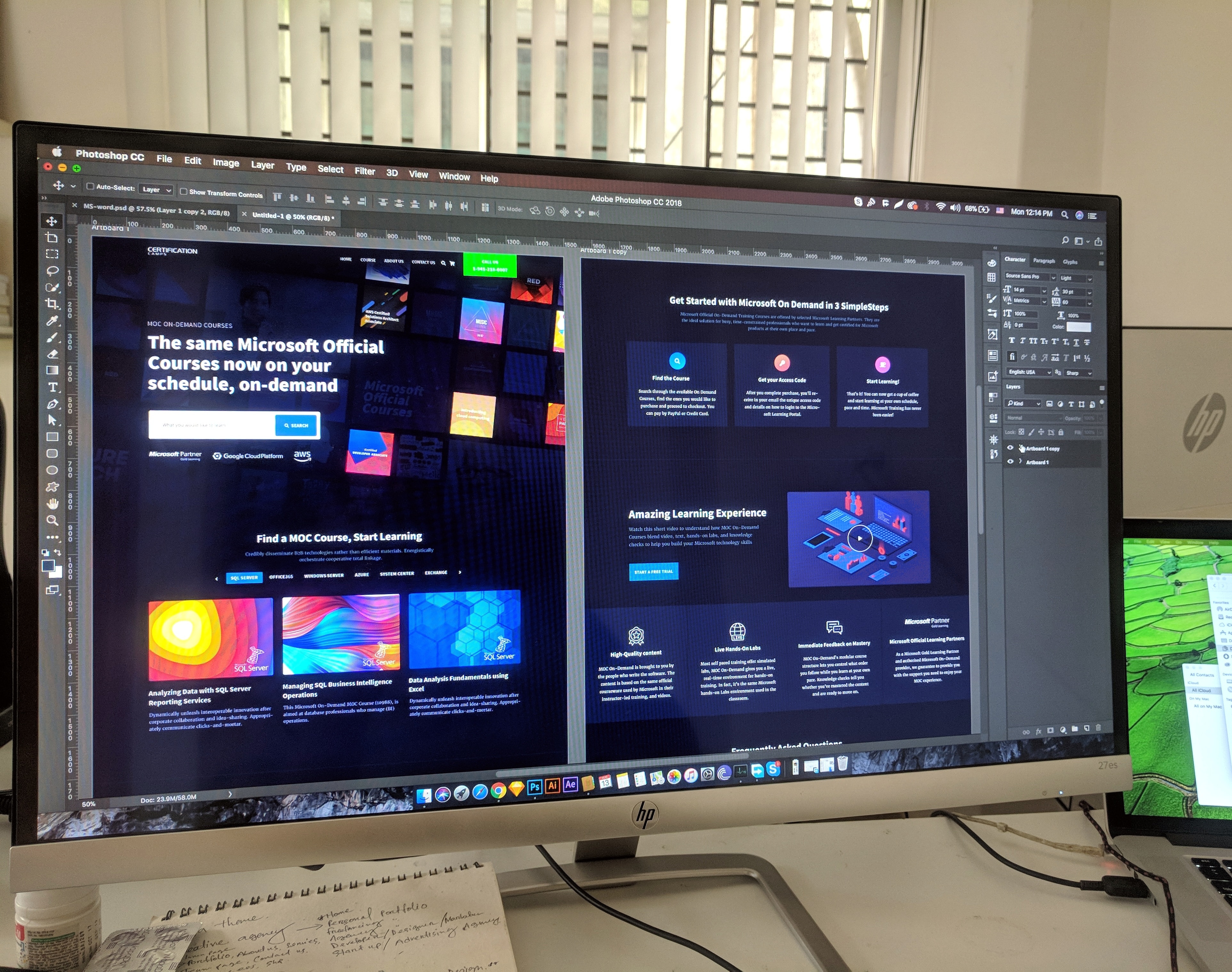The Future of Web Design and Development
The Future of Web Design and Development
Aug 21, 2024
Said Aidogdu
The Future of Web Design and Development in 2024
Web design and development are always changing. New tech and user demands drive this shift. As we look forward to 2024, various trends are set to revolutionize how websites and applications are created and experienced. This article explores key trends shaping the future of web development. It focuses on AI, immersive experiences, responsive design, and the skills needed to thrive in this fast-changing field.
If you want a top web design agency, you can schedule your free consultation today!
Key Trends Shaping the Future of Web Development
How is Artificial Intelligence Influencing Web Development?
AI is changing web development by using smart automation. It will improve the user experience. Developers are using AI in web apps more and more. They want to analyze user behavior, personalize content, and optimize functionality. AI-driven analytics can track user interactions on web pages. This lets web designers tailor experiences to user preferences. AI can streamline development by suggesting design elements and code snippets. This will save time and effort in web design in 2024.
What are the Emerging Technologies in Web Design?
As we enter 2024, new tech is gaining traction in web design. This includes blockchain, augmented reality (AR), and virtual reality (VR). Blockchain technology is secure. It protects transactions and user data. So, it's valuable for websites that need user trust. AR and VR are reshaping web experiences. They create immersive environments for users to interact with content in new ways. These technologies boost engagement. They also challenge web designers to rethink layouts and interfaces. Websites and apps must be both functional and captivating.
How do Design Trends Impact the Future of Web?
Design trends play a pivotal role in shaping the future of web design and development. Mobile-first design focuses on making web pages responsive. They should work well on all devices and screen sizes. This shift is driven by the increasing use of mobile devices for accessing the internet. Also, inclusive design and web accessibility are now key in the design process. They ensure all users, no matter their abilities, can use web experiences. Web developers and designers must track design trends. It's key to making relevant, impactful solutions in the fast-changing digital world.
How Will AI Technologies Change the Future of Web Design?
What Role Do Chatbots Play in User Experience?
Chatbots are now vital for improving user experience on websites and apps. These AI tools use natural language processing. They can chat with users in real-time, providing instant support. This level of interactivity not only improves user engagement but also helps in collecting valuable data regarding user preferences and pain points. Web designers should add chatbots to their projects. They will then provide users with quick responses. This will create a better web experience for today's users.
How Can Machine Learning Enhance Web Applications?
Machine learning is another AI technology that is set to revolutionize web applications. Machine learning algorithms analyze vast data to find patterns. They can then predict user behavior. This allows for more personalized web experiences. E-commerce sites can use machine learning to recommend products based on past interactions. This can greatly boost user engagement and conversion rates. As web developers harness machine learning, web apps will become more advanced. They will offer solutions tailored to each user's needs.
What are the Benefits of AI in Responsive Web Design?
AI is key to improving responsive web design. It's vital for fitting the many mobile devices on the market. AI lets designers create layouts that adjust to any screen. They will fit different sizes and orientations. This capability ensures that users have a consistent and engaging experience, regardless of how they access the web. In 2024, AI will streamline design and improve responsive web pages. It will help developers meet the needs of a mobile-first audience.
What are the Predictions for Web Design Trends in 2024?
How Will VR and Immersive Experiences Shape Web Design?
Looking ahead to 2024, VR and immersive experiences are expected to become integral to web design. These technologies let users interact with content. They turn static web pages into dynamic environments. For instance, businesses can create virtual showrooms where users can explore products in a 3D space, enhancing their online shopping experience. Web designers must integrate these immersive elements into their projects. They must do this without sacrificing usability and accessibility. All users should benefit from these advancements.
What are the Future Expectations for Mobile Devices in Web Design?
As mobile devices dominate internet usage, web design will focus on them. It will aim to optimize user experiences for these platforms. Designers will need to anticipate trends such as foldable screens and varying aspect ratios, ensuring that web pages remain visually appealing and functional across all devices. This shift to mobile-centric design will require web developers to adopt a proactive approach to responsive design. They must deliver seamless experiences that cater to mobile users' preferences.
How Can Designers Use Different Screen Sizes?
Catering to different screen sizes is a fundamental aspect of web design that will shape the future of web development. Designers must embrace responsive design. Their work must adapt to various devices. Techniques such as flexible grids, fluid images, and media queries are essential tools in a web designer’s arsenal. By prioritizing responsive design, developers can create inclusive web experiences. This will engage users, no matter what device they use. It will shape web design in 2024.
How to Stay Ahead in the Future of the Web Development Industry?
What Skills Should Web Designers Acquire for 2024?
To remain competitive in the rapidly evolving web development industry, web designers must continually update their skill set. It's crucial to know AI, machine learning, and responsive design. They are key to creating future-proof web solutions. Also, knowing inclusive design and web accessibility is vital. It will help make web experiences welcoming to all users. Designers should also improve their front-end development skills. The demand for complex web applications is rising.
How to Streamline Web Development Processes?
Streamlining web development processes is essential for maximizing efficiency and productivity. Utilizing modern tools and frameworks can help web developers manage their workflows more effectively. For example, using version control systems like Git can help. They track changes and aid collaboration with team members. Also, agile methods can speed up iterations and feedback. This keeps projects on track and aligned with user needs. By using these strategies, developers can better handle the complexities of web development in 2024.
What Strategies Help Improve User Engagement?
Web designers and developers want to boost user engagement. It's a top priority. They aim to create impactful web experiences. Strategies such as utilizing interactive elements, personalized content, and clear navigation can significantly enhance user interaction. Also, using analytics to understand user behavior helps designers. It lets them make decisions that fit users' preferences. By using these strategies, web pros can create a more engaging environment. It will keep users returning to their websites and apps.
What is the Future of Website Design?
Implement Progressive Web Apps for Better User Experience?
Progressive web apps (PWAs) are emerging as a vital component of the future of web design. They combine the best of traditional web pages and mobile apps. They provide a seamless experience, no matter the internet connection. Implementing PWAs involves using service workers, which enable offline access and faster load times, greatly enhancing user experience. As designers and developers explore PWAs, they can create better web solutions. These will be robust and accessible, meeting diverse user needs.
What are the Best Practices for Shaping the Future of Web Design?
To shape the future of web design, pros must follow best practices. They should prioritize usability, accessibility, and responsiveness. This includes user research to understand target audiences' needs and preferences. It also involves testing and improving designs based on user feedback. Also, a mobile-first approach optimizes web experiences for the most used devices. By committing to these best practices, web designers can create high-quality websites that resonate with users and stand the test of time.
Leverage Technologies in Web Design for Better Performance
Leveraging the latest technologies in web design is crucial for improving website performance. Using CDNs can improve load times. Optimizing images and minimizing code can greatly reduce page size. Furthermore, incorporating AI technologies can automate performance monitoring and provide actionable insights to improve user experience. By embracing these advancements, web designers can improve their sites. They will also stay competitive in the fast-changing 2024 digital landscape.
UREST, We Work
A high-converting landing page or website is just one step to online success. At UREST, we build solid, user-friendly websites using Framer. We are verified Framer Experts, and Framer is the future of web Design and Development! They capture leads, drive sales, and grow businesses. Our experts are here to help you. We'll craft the perfect landing page or a fully functional website, tailored to your needs. Ready to take your digital presence to the next level? Contact us today. Let uRest help you build a website that converts and sets you apart from the competition. For more information you can click this link and schedule your free consultation today!






















